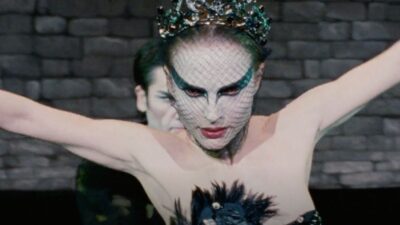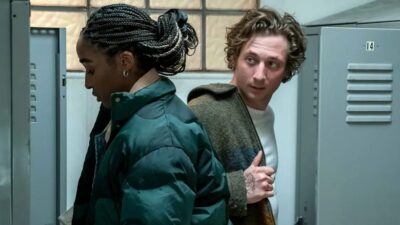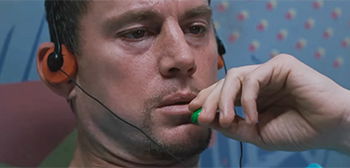WARNING! This article contains spoilers for The Vision and the Scarlet Witch #2.
In the complex world of superheroes, great power comes with great responsibility. However, those heroes wielding such power often struggle with the meaning behind their actions. The question whether one should do something, even if they can, is something Wanda Maximoff/the Scarlet Witch has consistently faced.
In The Vision & The Scarlet Witch #2, written by Steve Orlando with art by Lorenzo Tammetta, Wanda Maximoff, the Scarlet Witch, confronts a huge ethical question that the Marvel Cinematic Universe has largely overlooked when it comes to her character. In the issue, Wanda hits on a deep point: “I can resurrect the dead. I can do almost anything. The question is, should I? With power and reach like mine, I need to ask what I have the right to do.”
Wanda’s introspective question focuses on a crucial aspect of her powers and responsibilities that has been less explored on screen in the MCU.
Wanda Confronts the Unpredictability Of Her Power
The Vision And The Scarlet Witch #2, Written By Steve Orlando With Art By Lorenzo Tammetta
The Vision and the Scarlet Witch #2 picks up just as Wanda resurrected Vision from what appeared to be death. However, Wanda later explains that Vision wasn’t quite dead, which allowed for her chaos magic’s effectiveness. Vision is not so enthusiastic about Wanda’s help, demanding to know what she did.
Wanda admits that while she saved his life with “chance and magic,” she couldn’t fully predict that he would come back a White Vision and with such rage inside. This immediately establishes the unpredictable nature of Wanda’s chaos magic and the unintended side effects of her powerful actions.

Related
Marvel Just Convinced Me the MCU’s White Vision Is a Villain, Not a Hero: “Powerfully Unhinged”
White Vision’s chaotic resurrection forces Wanda to contain his destructive rage, hinting at a villainous turn instead of a heroic return.
After Wanda confines Vision to the “Clutch Dimension,” she watches him cycle through intense emotions: confusion, deep depression, righteous anger, and desperate pleading, before finally calming. She recognizes that he is experiencing grief in a way that is different for him, as his emotions are driven by instinct and not logic.
Once Vision is fully calm, he notices the fear in Wanda’s heart. She admits to being terrified by the results of her actions, her internal conflict showing that she is struggling with the moral implications of her actions.
The Moral Weight of Wanda’s Decisions Comes to Light
The Power Over Life And Death Is A Heavy Burden To Bear
The pivotal moment in The Vision and the Scarlet Witch #2 arrives when Wanda outright asks whether she has the right to essentially “play god” by using her chaos magic to determine life and death. This question is a powerful one, showing that she is well aware of her own inner moral compass and the heavy responsibility that comes with her abilities. It’s a recognition that not all actions, even those with good intentions, are necessarily right.
Wanda’s introspection stands in stark contrast to how the powers and morality of her MCU counterpoint, played by Elizabeth Olsen, have often been portrayed in films and the Disney+ series, WandaVision. While MCU Wanda’s motivations frequently stem from deep grief or her survival instincts, the ethical questioning of her abilities and the implications of such godlike power is largely absent.
In WandaVision, she eventually grapples with the consequences of her actions when she realizes that her actions unintentionally harmed the citizens of Westview. She makes the difficult choice to free them and bring down the Hex that keeps Vision and her twin sons alive, knowing that the three will cease to exist thanks to her actions.
This fleeting morality seems to vanish with her next MCU appearance.
Though this shows a moment of ethical consideration, this fleeting morality seems to vanish with her next MCU appearance. In Doctor Strange in the Multiverse of Madness, Wanda’s readiness to destroy timelines, harm/kill others, and even confront her own variant, who is a loving mother to another version of Billy and Tommy, to achieve her desires shows disregard for the consequences of her actions.
Wanda has no qualms in attempting to kill another child, America Chavez, as long as that murder serves her ultimate purpose of finding her twins. She easily dispatches the Illuminati without any consideration for how their deaths will affect the timeline as a whole and their native world. Her mind is of singular focus, so much so that she is ready to kill her variant in front of the terrified twins.
Though Wanda ultimately has a moment of regret, leading her to bring Mount Wundergore down on top of herself and destroy the Darkhold, her wake of chaos is a departure from the moral introspection seen in the comic. The Vision and the Scarlet Witch #2 brings a much-needed layer of self-reflection to Wanda Maximoff’s character, posing the crucial “should I?” question that the MCU has, to its detriment, largely forgotten to ask her.
The Vision and the Scarlet Witch #2 is available now.

- First Appearance
-
The X-Men (1963)
- Died
-
Doctor Strange in The Multiverse of Madness
- Alias
-
Wanda Frank
- RELATIONSHIPS
-
Vision (Lover), Quicksilver (Brother)
error code: 524
2025-06-27 00:00:00
#Scarlet #Witch #Finally #Answering #Question #MCU #Forgot #Years




